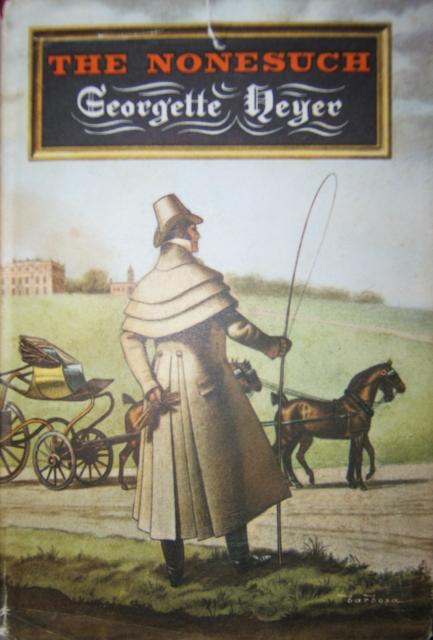 My article about Georgette Heyer is out now in the latest issue of the Journal of Popular Romance Studies. It's called "Georgette Heyer: The Nonesuch of Regency Romance" and it addresses a variety of issues, including Heyer's attention to historical detail, her didacticism, and her attitudes on matters relating to race and class.
My article about Georgette Heyer is out now in the latest issue of the Journal of Popular Romance Studies. It's called "Georgette Heyer: The Nonesuch of Regency Romance" and it addresses a variety of issues, including Heyer's attention to historical detail, her didacticism, and her attitudes on matters relating to race and class.
I've identified a number of primary sources Heyer seems to have used in her research, including an engraving of the Dropping Well which is mentioned in The Nonesuch and the guidebook Corisande Stinchcombe's been reading in Lady of Quality. I also think I've pinned down the precise year in which The Nonesuch is set (it's the first of the two possibilities given in the "Heyer Novel Chronology").
I conclude that:
As with the Nonesuch’s gift of a “dissected map [...] all made of little pieces which fit into each other, to make a map of Europe” (190), “The impression given of ‘history’ in these novels can be summed up as an imaginative creation, a selective version of the past” (Hughes 139). The nineteenth-century dissected map, “born in the same workshops as its more formal sibling, the imperial map” (Norcia 5), offered children “narratives of power and authority which are incumbent in the business of building both nation and empire” (2). Such maps were not simply neutral depictions of the world: they were “often strategically colored or marked to catalog the resources and opportunities for imperial inscription; titles reflect the moving horizon of imperial ambitions” (10). Heyer’s historical romances are also shaped by ideologies which ensure that, despite the historical accuracy of many of their details, they will not be universally accepted as “quite unexceptionable.” Mrs Chartley cautioned Miss Trent that
Sir Waldo belongs to a certain set which is considered to be the very height of fashion. In fact, he is its leader […]. You must know, perhaps better than I do, that the manners and too often the conduct of those who are vulgarly called Top-of-the-Trees are not governed by quite the same principles which are the rule in more modest circles. (207)
Heyer is the Nonesuch of Regency romance: like Sir Waldo she led her “set,” conforming to such high standards of historical accuracy that she too can be considered a “paragon” (20). Nonetheless, neither Heyer nor Sir Waldo embodied “perfection” (20) and the manners and conduct endorsed by Heyer’s novels are not governed by quite the same principles as those which are the rule in many more modern circles. (11-12)
You can read the article on the JPRS website or download the pdf.
------
Vivanco, Laura. "Georgette Heyer: The Nonesuch of Regency Romance." Journal of Popular Romance Studies 3.2 (2013).
